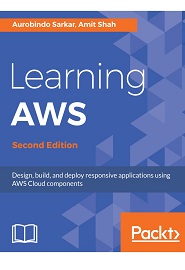
English | 2018 | ISBN: 978-1787281066 | 356 Pages | PDF, EPUB, MOBI | 227 MB
Learning AWS – Second Edition: Design, build, and deploy responsive applications using AWS Cloud components
Discover techniques and tools for building serverless applications with AWS
Amazon Web Services (AWS) is the most popular and widely-used cloud platform. Administering and deploying application on AWS makes the applications resilient and robust. The main focus of the book is to cover the basic concepts of cloud-based development followed by running solutions in AWS Cloud, which will help the solutions run at scale.
This book not only guides you through the trade-offs and ideas behind efficient cloud applications, but is a comprehensive guide to getting the most out of AWS. In the first section, you will begin by looking at the key concepts of AWS, setting up your AWS account, and operating it. This guide also covers cloud service models, which will help you build highly scalable and secure applications on the AWS platform. We will then dive deep into concepts of cloud computing with S3 storage, RDS and EC2. Next, this book will walk you through VPC, building realtime serverless environments, and deploying serverless APIs with microservices. Finally, this book will teach you to monitor your applications, and automate your infrastructure and deploy with CloudFormation.
By the end of this book, you will be well-versed with the various services that AWS provides and will be able to leverage AWS infrastructure to accelerate the development process.
What You Will Learn
- Set up your AWS account and get started with the basic concepts of AWS
- Learn about AWS terminology and identity access management
- Acquaint yourself with important elements of the cloud with features such as computing, ELB, and VPC
- Back up your database and ensure high availability by having an understanding of database-related services in the AWS cloud
- Integrate AWS services with your application to meet and exceed non-functional requirements
- Create and automate infrastructure to design cost-effective, highly available applications
Resolve the captcha to access the links!